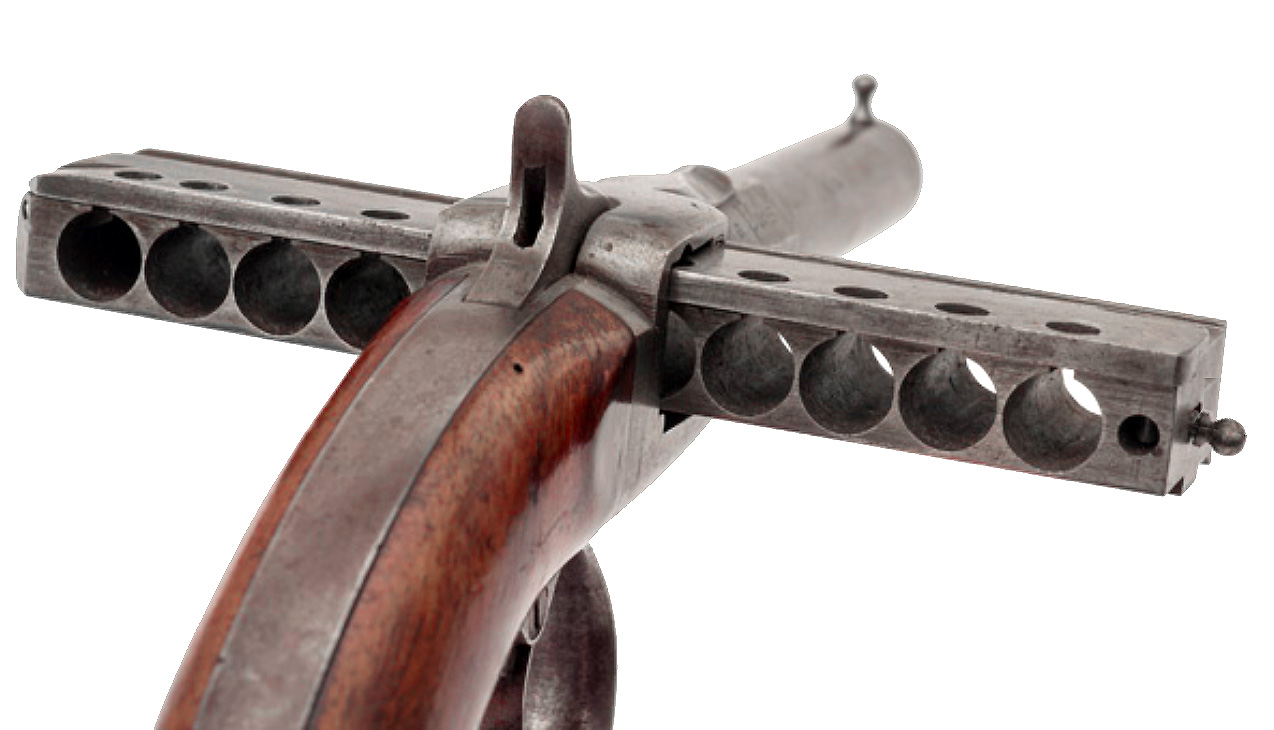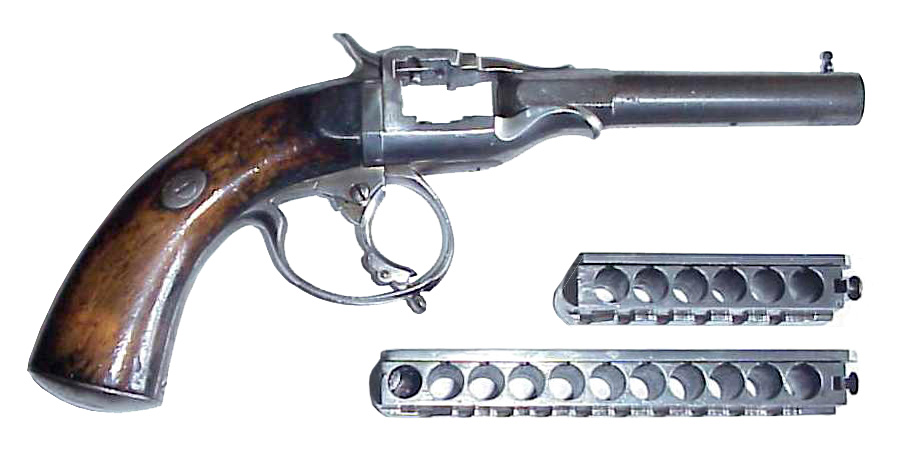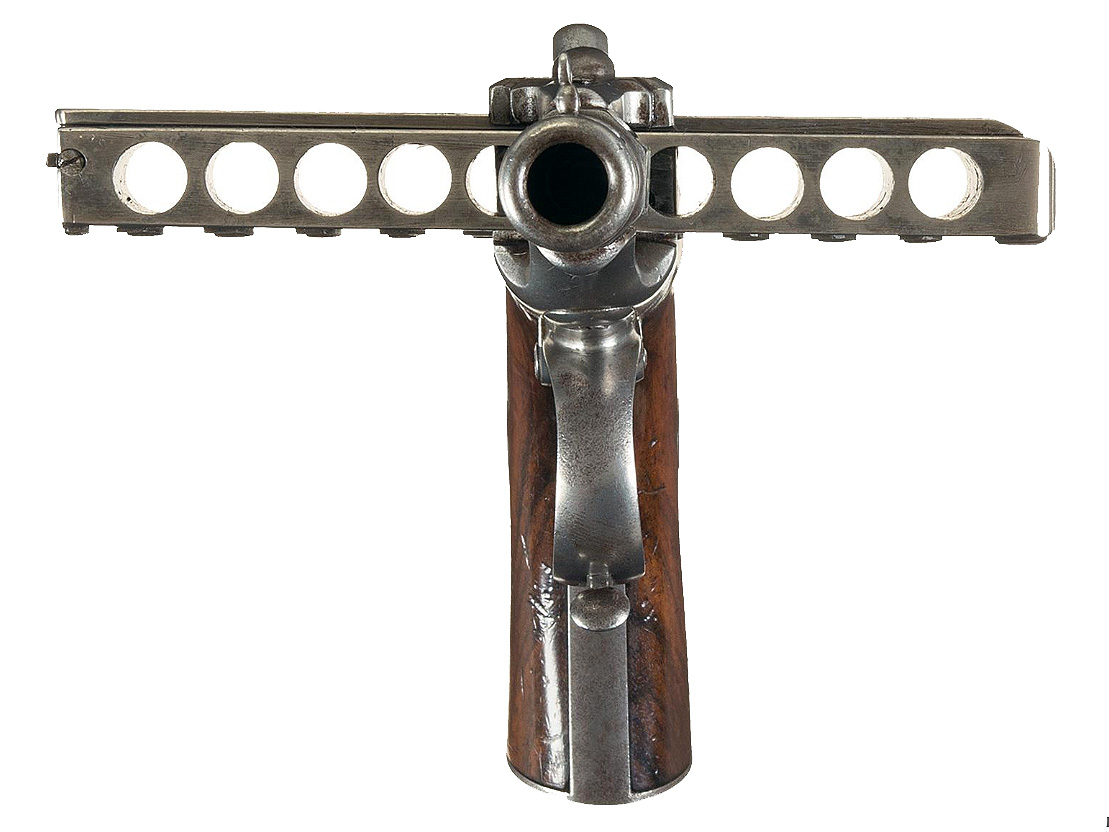Designed during the era of pinfire cartridges this was an early attempt at creating higher capacity handguns. Developed in the 1850s in Paris, France, the Jarre is fed via a 10-round horizontal magazine of sorts which is pre-loaded with pinfire cartridges. The magazine automatically advances between chambers horizontally when the pistol is cocked.

While the short-lived design gave an increase in capacity over conventional six-shooter revolvers of the era, it definitely had its flaws. The gun had poor balance as the horizontal magazine made its way through the gun's breech. And, the gun could not be easily carried like the standard revolver of the era.

One would have to remove the magazine and carry it separately in order to holster the pistol conventionally, negating the ability to use the gun as quickly as a revolver. In an attempt to resolve this problem shorter starter magazines could be employed in various sizes providing from three to six initial loaded rounds before having to reload with the wider ten round magazine. But still, due to the lop-sided nature of the gun it remained difficult to carry.
Given its flaws though, is was probably the best attempt in exceeding the capacity of the current era's pinfire revolvers. The particularly awkward design of the pinfire cartridge made it difficult to deploy in a repeating pistol.
As such, this gun design was as short lived as the cartridge. The introduction of primer loaded center-fire cartridges made way for much more efficient repeating pistol designs.
Several manufacturers produced the harmonica gun over the 1800s. The most notable was Jonathan Browning, father of the world-famous John Browning.
